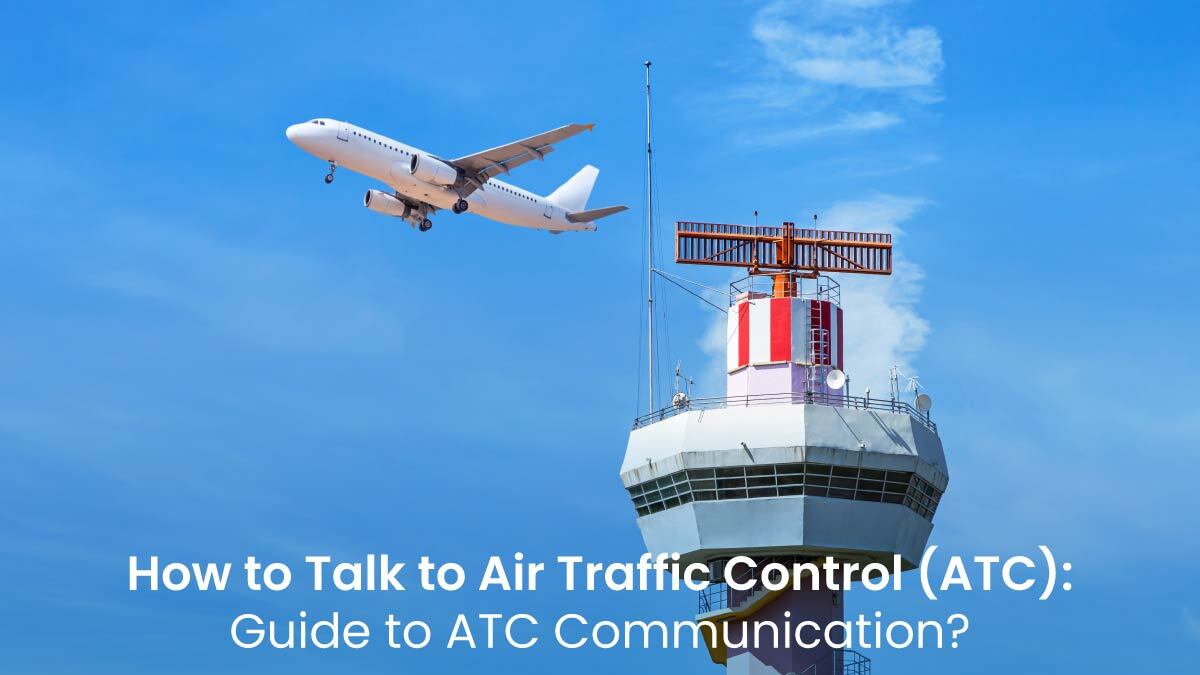
Are you new to communicating with ATC in your pilot journey?
Communicating with Air Traffic Control (ATC) is one of the most essential skills every pilot must master. Clear, concise, and efficient communication ensures the safe and orderly flow of air traffic, reducing risks associated with misunderstandings or misinterpretations. Whether you’re a student pilot taking your first tentative steps into the sky or a seasoned captain with thousands of flight hours under your belt, honing your communication skills is paramount. This guide will help you develop better communication practices with ATC.
Understand the Basics of ATC Communication
The first rule of ATC communication is clarity. Every conversation between a Pilot and an Air Traffic Controller should be precise and devoid of ambiguity. ATC communications follow a standard phraseology that is understood globally. Before your first interaction with ATC, familiarise yourself with commonly used aviation terms and abbreviations like QNH (pressure setting), squawk codes, and altimeter settings.
The basic structure of your communication goes like this:-
- Who you’re calling (name of the facility)
- Who you are (your aircraft’s call sign)
- Where you are (your current location or altitude)
- What you want (your request or the service you’re seeking)
For Instance: Chicago Ground, Piper 45XY at Echo 2, ready for a taxi with information Bravo.”
This call includes the aircraft type and call sign (Piper 45XY), the current location on the airport (Echo 2), and the ATIS information (Bravo).
Learn the Different ATC Facilities
It is crucial to know which ATC service you are communicating with since different facilities handle various stages of your flight. Here are the most common ATC facilities:
- Ground Control: Handles movements on the ground, like taxiing to and from the runway
- Tower Control: Manages takeoffs and landings
- Departure/Approach Control: Handles aircraft leaving or entering an airport’s airspace
- En-Route (Center) Control: Manages aircraft cruising between departure and destination airports
Knowing when to transition between these services helps streamline communication.
Use Standard Phraseology
Aviation relies on standardised terminology to minimise the chance of confusion. Some common phrases are:-
- “Affirmative” instead of “yes”
- “Negative” instead of “no”
- “Wilco” instead of “I will do it” (wilco is the short form of will comply)
- “Standby” for “wait”
- “Read back” to repeat the instruction
Always aim for precise when communicating with ATC. Use simple but effective language, and avoid unnecessary details.
Master Radio Procedures
When communicating with ATC, following proper radio procedures is key. Keep these tips in mind:
- Listen before you transmit: Always listen to the frequency for a few moments to avoid interrupting ongoing communications. This also helps you stay updated with what’s happening in the airspace around you.
- Think before you speak: Plan out what you need to say before pressing the microphone button. This reduces hesitation and improves your communication flow.
- Transmit briefly and clearly: Use a calm and clear voice when transmitting. Avoid speaking too quickly, and always use your call sign in every communication to ensure ATC knows who they are talking to.
- Read back important information: Always repeat critical instructions such as altitudes, heading changes, and clearance limits.
Deal with High Workload Situations
In busy airspace, ATC communications can become fast-paced and overwhelming, especially for new pilots. During these moments:
- Stay calm: If you miss a call or need clarification, ask ATC to repeat the instructions. Saying “read again” or “say again” can prevent confusion
- Set priorities for your tasks: Pilots emphasise that operating the aircraft always comes first by using the phrase “aviate, navigate, communicate.” If ATC issues instructions during a critical stage of flight, fly the airplane first and respond when it’s safe to do so
Handling Miscommunications
Miscommunications between ATC and pilots can occur. In case you misunderstand an instruction:
- Ask for confirmation: If you’re unsure of an instruction, it’s better to request clarification than to assume
- Correct ATC when necessary: ATC controllers can also make mistakes. If they issue an incorrect instruction, politely state the information, and they will confirm
For example, if ATC says, “Descend to 4,000 feet,” but you were cleared for a higher altitude, respond with: “Unable, cleared to maintain 8,000 feet.”
Continuous Learning
The learning curve in ATC communication is ongoing. Review your flights after landing, identify areas where communication could have been clearer, and learn from mistakes. Pilots also benefit from listening to ATC recordings available online, helping them familiarise themselves with different accents and communication styles.
Mastering communication with Air Traffic Control is crucial for every pilot. By practising these guidelines and using proper phraseology, you’ll enhance safety and efficiency in the skies. Remember, ATC is there to assist you, so don’t hesitate to reach out if you need guidance or have any questions. Join Insight Aviation’s IndiGo Cadet Pilot Programme and excel in ATC communications. Insight Aviation’s skilled trainers and practical training can take your aviation career to new heights.
FAQs
Q. How do pilots contact ATC for the first time?
A. Pilots contact ATC by stating the facility name (e.g., “Tower” or “Ground”), their aircraft’s call sign, location, and request, such as taxiing or taking off.
Q. What are common mistakes pilots make when talking to ATC?
A. Common mistakes include speaking too fast, using non-standard phraseology, and forgetting to listen before transmitting.
Q. Can student pilots communicate with ATC?
A. Yes, student pilots are trained to communicate with ATC and are encouraged to practice clear and concise communication.
Q. Why is communication with ATC important for pilots?
A. Communication with ATC ensures the safe coordination of aircraft movements, preventing collisions and maintaining efficient airspace management.

